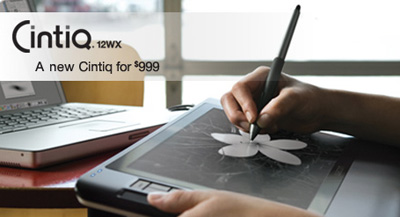In this episode I pull an email out of the listener email bag. Then I discuss copyrights. After that I get into some tips for taking great stock photos.
Read on for all the notes from the copyright segment.
Copyright
There is a lot of confusion about what is copyrighted and what is not especially when talking about photographs and this age of the internet. When can you use something you found on the internet? What is Fair Use?. What is editorial use?
In the past I have had many situation in my personal and professional lives where I have had to confront people that were illegally using my images, CAD Drawings, designs or text. After talking with people over the years I am convinced that many of them had no idea that they were doing anything wrong at all. Many of them were victims of misinformation.
Let me state up front that I am not a lawyer and I do not play one on this podcast. Most of what I’m going to tell you has been learned from books I’ve read on the subject and articles i have read by reliable sources. Do your own research before using any of the information that I’m about to give you.
Some of the information that I’ll cover here comes from Kathy Biehl’s article “Debunking Nine Copyright Myths of the Online World” Published on February 7, 2006 which can be found on www.LLRX.com
Kathy Biehl advises authors, businesses and Website developers on issues of copyright protection and use, she is an attorney licensed to practice in New Jersey and Texas.
Another great resource for information on this topic is Bert Krages book “Legal Handbook for Photographers” which you can find at Amazon.com
#1: Is it okay to use anything that doesn't have a copyright notice
No, a copyright notice is not required.
Exceptions include
a. any work of the federal government;
b. any work published before 1923 and
c. any work without a copyright notice published between 1923-1978. Those works are in the public domain.
It is not okay to use a recent work just because it doesn't have a copyright notice. If the work is recent, it doesn't have to have a copyright notice. No notice is required for works published since 1978; under current law, the copyright attaches to a work as soon as it is set in tangible form. This means that permission is necessary to use anything that is less than 25 years old, whether or not the work carries a copyright notice.
#2: Is it okay to use anything that's online, because if it's online, it's in the public domain and up for grabs
No. Posting a work online makes a work available to the public, but that act does not magically remove the work from the protection of copyright and transfer it into the public domain.
A lot of people use the term public domain with no idea what it really means.
"Public domain" does not mean the same thing as "on the Web" or even "publicly available."
The public domain is the collection of works that are not subject to anyone's copyright, so anyone, may freely use them.
The only way a work can enter the public domain is for copyright protection to expire or to never attach
A work is in the public domain if it was created:
* By the federal government, at any time.
* Between 1964-1977 without a copyright notice.
* Between 1923-1963 with a copyright notice, if the copyright was not renewed when the initial term expired.
* Between 1923-1963 without a copyright notice.
* Before 1923.
A U.S. work is still subject to copyright protection if it was published:
* From 1978 - on.
* Between 1964-1977 with a copyright notice.
Between 1923-1963 with a copyright notice, if the copyright was renewed
#3: Is it okay to use anything as long as you don’t make any money off it.
No. The absence of a profit might affect how far a copyright holder decides pursue you for an infringement, but it does not determine whether the infringement exists. The question is whether you have permission for the use. If you don't have permission, you're infringing.
#4: Is it okay for a non-profit organization to use anything
No. Non-profit status does not automatically convey special privileges under copyright law. A non-profit organization has to follow the same copyright rules as everyone else.
#5: is it okay to use anything as long as you give credit to the creator
No. For copyright law, the question is whether you have permission. If you don't have permission, you're infringing.
#6: is it okay to use anything as long as you include the creator's copyright notice
No -- unless the copyright notice permits the use you are contemplating.
A Creative Commons license is an example of a copyright notice that can grant special permission for some uses.
#7: Is it okay to use anything as long as you take it down when the copyright holder objects
No. The fact that you stop infringing does not alter history and erase the fact that you infringed in the first place.
#8: It's okay to use something if you can't find the copyright holder
No. Do not assume that you are free to use the work if you can't locate the copyright holder. Elusiveness is not an excuse, if the copyright is still in effect. "I can't find the owner" is not an excuse a court is going to accept. Proceed at your risk.
#9: It's okay to use something if you asked for permission and didn't get a response
No. Silence does not equal consent in this situation. In fact, silence makes things worse for you. If you use a copyrighted work after requesting and not getting permission, you are knowingly infringing on the copyright, which ups the penalties if the holder decides to take action against you. The ceiling on statutory damages skyrockets from $30,000 to $150,000 per work when an infringement is willful. 17 U.S.C. § 504.
Here are some simple rules to help keep you out of trouble
1. You can use someone else's work only if:
a. You have permission;
b. The work is in the public domain; or
c. What you do with the work amounts to "fair use."
2. If you do not know whether a work is subject to copyright, do some investigation and find out.
3. If a work is subject to a copyright, don't use it without getting permission.
4. If you don't know if it's copyrighted or not or do not know for certain that it is in the public domain, don’t use it.
5. If you have any doubts before you use content that is not yours you should consult a copyright or intellectual property attorney. The cost of their advice will by much lower than defending yourself in a copyright infringement lawsuit.
One final note before we leave this subject, question number 3 is probably one of the most often quoted reasons for using copyrighted material without permission. There are loads of people making video clips for YouTube that use what they “find” on the internet as part of their videos. They often say and believe that since they are not selling their video or using it to sell anything else ... it’s just done for fun and nobody gets hurt. There are actually cases where this is true, a goofy little video is done fun, a few people see it and that’s the end of it. But what if the video includes photos, video clips or music that was found on the internet and it does what they call “go viral” and suddenly it’s everywhere (remember the numa numa song, Chocolate Rain, and others), national radio shows are talking about it, TV news is talking about it ... suddenly the person that made the video is famous and making loads of money making appearances on chat shows, maybe he or she writes a book, records a music video, opens a website selling stuff ... who knows ... celebrity is a crazy thing. Now this person has built a career (however short it will most likely be) on the backs of other people’s work. Does that sound fair?
The ultimate source http://www.copyright.gov/



